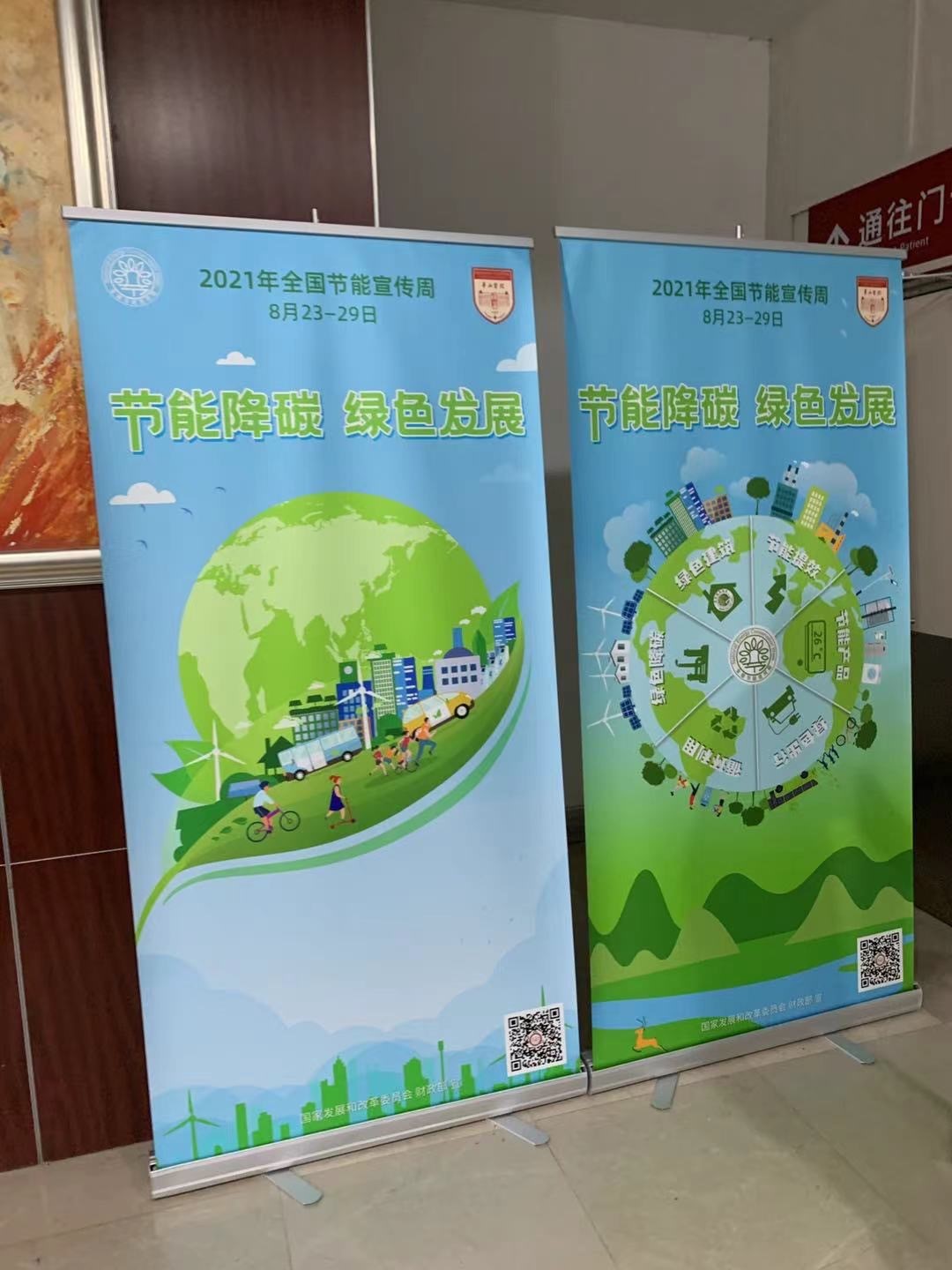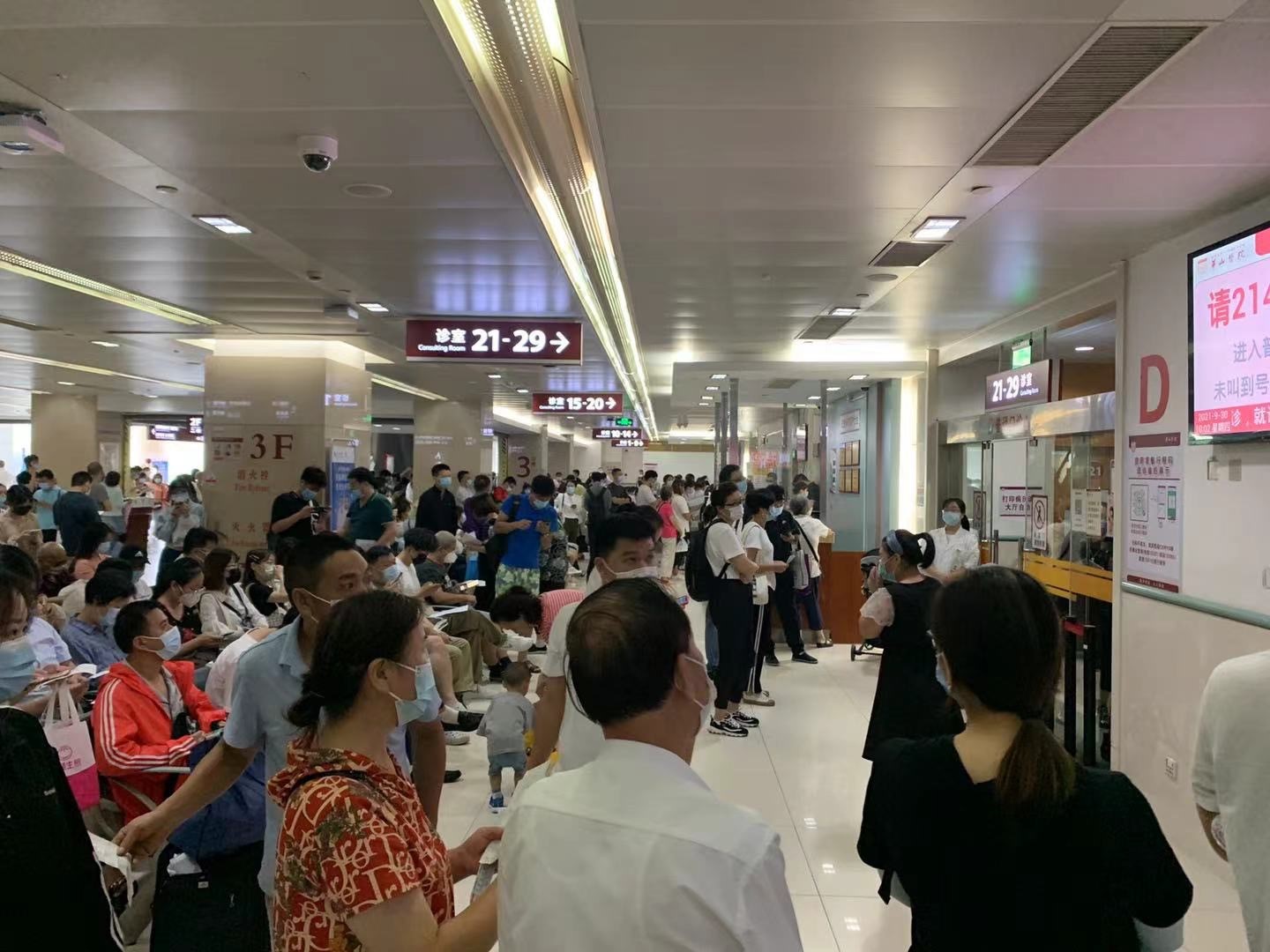

The human health impact of climate change has become increasingly severe over the past few years. According to the World Health Organization (WHO) Air Pollution Index, released at the end of September 2021, every year, 7 million people die prematurely worldwide due to air pollution[1]. This index undoubtedly puts the medical sector in a pivotal role in the fight against climate change. With a growing population and its associated increasing demand for healthcare, the medical sector is also contributing to larger proportions of international GHG emissions, where healthcare infrastructure and operation management accounts for majority of this emission. In China, the healthcare industry occupied 3.1% of overall carbon emissions in 2012, where 13.3% of it is from medical infrastructure[2]. In September 2020, China committed to its newest "3060 Dual-Carbon" target while hoping to maintain its fast growing economy. Also in 2020, the emissions from overall infrastructure operation accounted for 20% of the country's total emissions, densely populated commercial and public buildings accounted for 20% of those emissions. For infrastructure operations, 60% of the energy is used for heating, and 7% for air conditioning and cooling[3]. In 2006, China's Green Building Evaluation Standards defined “Green Building” as one that “saves resources (energy, land, water and material) to the greatest extent, protects the environment and reduces pollution, provide people with healthy, applicable and efficient space, and is in harmony with nature".
To achieve China's "Dual Carbon" target, it must be recognized that the climate crisis is also a health crisis, meaning that the medical sector plays a critical role in the face of combating climate change. The "Global Roadmap for Healthcare Decarbonization", released by Healthcare Without Harm in 2021, also shows that carbon reduction in building facilities and medical service is crucial in the medical sector decarbonization. Therefore, the medical sector is encouraged to mitigate greenhouse gas emissions as much as possible while ensuring patients' medical safety. However, buildings in medical institutions are variable and complex, making it challenging to execute emission reduction strategies. Therefore, it's important to obtain accurate, long-term, and simultaneous baseline energy data. Besides, hospitals should retain comprehensive historical energy data, increase the usage of building automation management systems, and conduct a full range of energy audits both before and after the implementation of energy-saving projects, in order to find out the most appropriate emission reduction plan.
Figure 1: Energy saving and emission reduction publicity day of Huashan Hospital

Small grant, big move
This is a pilot project focused on energy audit and energy-saving renovation of air conditioning systems in a large public hospital in central Shanghai City, funded by the United Nations Development Programme - Global Environment Fund - Small Grant Program (UNDP-GEF-SGP), aimed at conducting a teachable reference to other medical institutions across the country in climate mitigation. The project was led by the Rock Environment and Energy Institute in Shunyi District, Beijing, and is implemented in the Huashan Hospital, a member hospital of China Green Hospital Committee.
Huashan Hospital, founded in 1907, is a well-known grade III class A comprehensive hospital located at the center of Shanghai. Large-scale public hospitals at the center of first-tier cities like Huashan Hospital are comprehensive and influential. Unlike shopping malls and hotels, the energy consumption per unit area of medical buildings is about double that of public buildings due to their medical features and operation time. With increasing medical demand and a need for more advanced healthcare technology, there is increasing pressure on the adaptability of medical buildings, leading to higher infrastructure energy consumption in recent years.
Figure 2: People in the Outpatient Area, 3rd Floor, Building 1, Huashan Hospital

Hospital buildings are versatile with complex energy profiles running on different timelines, covering a wide range of departments. Identifying the distribution of hospital energy consumption, improving energy consumption monitoring and data analysis are crucial steps to set up a baseline for hospital energy management. Huashan Hospital has a long history, and each building was constructed in different period, with different functions, indicating that the energy composition and consumption also varies from one another. For example, different areas of the outpatient room and the emergency room have a large flow of people and personnel mobility, while the comprehensive building has a large number of inpatients, a great deal of functional zones, and special medical conditions. Due to its functional purpose, hospital energy management are rated at a higher level of standard. Prof. Su Xing's team from Tongji University, showcased three paths to energy-saving after a month of overall energy system testing and verification, namely reducing energy demand, using renewable energy and high-efficiency energy-saving products. Among the energy consumption systems of hospital buildings, the air-conditioning system accounts for the largest proportion of energy consumption, making it the focus of energy-saving renovation in hospitals. This project hopes to achieve the results of effectively reducing the energy consumption and carbon emissions of the hospital air-conditioning system, through energy-saving transformations at low cost. There were many options for this transformation, such as cleaning AC air filter, increasing shade to reduce heat, or changing daily utilization habits. Considering the energy-saving effect and budget limitations, the final project was set to focus on upgrading the automatic management system by installing indoor carbon dioxide sensors and fresh air intake valves. There were mainly two purposes for installing this system in the outpatient department of Building 1 of the Hospital. One is to detect the CO2 concentration in public places at all times, when the CO2 concentration surpasses the security level, it will trigger the opening of outdoor fresh air intake valve to reduce the CO2 concentration to below the security value. Similarly, when the CO2 concentration in public places is below the security value, the outdoor fresh air vale would close and fresh air intake would stop, which can reduce the energy consumption required to process the fresh air for optimal indoor temperature.
Built in 2003, Building 1 of Huashan Hospital was originally designed to accommodate 6,000 visits per day, but now its at 10,000 visits per day. In this crowded public environment, the central air-conditioning system and other mechanical ventilation devices are mainly applied to improve the indoor air quality. Therefore, once the air flow and the oxygen level is low, the indoor air could be polluted, and could have a negative impact on human health. Before the renovation, the building's fresh air system was kept open 24 hours every day, with very inconvenient manual valve controls. When encountering extreme hot or cold weather, the always open fresh air system will affect the regulation of indoor temperature, resulting in high-intensity operation of the cooling or heating system, and unnecessary energy waste. During the previous energy audit and inspection process, Prof. Su Xing from Tongji University continuously collected data of CO2 changes in typical areas for a week, and it was shown that the overall hospital carbon dioxide concentration mainly scattered in the range of 500-1000ppm. The most prominent data came from the Infusion Room and the Emergency Room in Building 1, due to the lack of ventilation and the large flow of people, the CO2 concentration fluctuated greatly, even reaching a value of about 2000ppm. In the indoor environment, when the carbon dioxide concentration exceeds 1000ppm, people would feel uncomfortable; and when it reaches the range of 1500ppm-2000ppm, the air is already slightly polluted; when it exceeds 2000ppm, it is considered to be serious pollution, which will induce symptoms such as difficulty breathing, headache, tinnitus, and high blood pressure.[4]
Based on the energy audit report of Huashan Hospital, this renovation selected the Infusion Room and Emergency Room of Building 1 that had a relatively high and fluctuated carbon dioxide concentration as the installation location. According to the forecast in the energy audit report, the total energy consumption of the air-conditioning system after the renovation of Building 1 can be saved by 5%, indicating 130,000 kWh of electricity every year. It's also would save about 11 tons of indoor air pollution emissions, and the investment return period is approximately 3.32 years.
Be a pioneer in carbon neutrality
As a leading green medical institution in the country, Huashan Hospital's energy-saving and water-saving efforts has been recognized by experts and scholars in the industry, and has become a model hospital to other institutions. In large hospitals across China, the prevention and control of indoor air pollution is an obligation to doctors, patients and practitioners. In addition to improving the indoor air, this project also increased the efficiency of fresh air exchange, replacing the time-consuming and labor-intensive manual fresh air system with a fully automatic fresh air valves to achieve optimal energy use. The BAS-Building Automation System of Huashan Hospital, invested and installed by the National Health and Construction Commission, has played a vital role in this project. Comprehensive historical and real-time data collection, analysis, and sharing can help hospital operators obtain accurate information, and make safe and energy-saving decisions. In conclusion, this pilot project at Huashan Hospital is expected to play a leading role for medical institutions across the country on the road to decarbonization.
Note:
[1] WHO, 2021. Global Air Quality Guidelines,
https://apps.who.int/iris/bitstream/handle/10665/345329/9789240034228-eng.pdf?sequence=1&isAllowed=y
[2] Healthcare Without Harm 2021, Global Roadmap for HealthcareDecarbonization,https://healthcareclimateaction.org/roadmap
[3] IEA, 2021.Page 129. An Energy SectorRoadmap to Carbon Neutrality In China. https://www.iea.org/reports/an-energy-sector-roadmap-to-carbon-neutrality-in-china
[4] https://www.sohu.com/a/208288273_99993852
Author:Pan Yiren, Xing Xing, Mei Jiachen
Translation: Chen Shikai
Proofread: Pan Yiren & Zhao Ang
This article is an original article of the Rock Environment and Energy Institute. Please contact us to obtain the appropriate authorization to reprint. For cooperation and authorization, please send an email to: liying@reei.org.cn
* This is the translation of an article in Chinese. Should there be any inconsistency between Chinese and English version, the Chinese version shall prevail.




